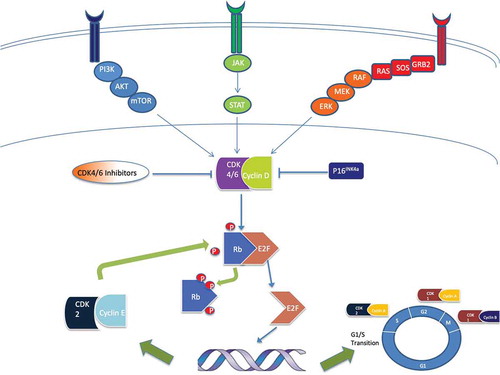Figures & data
Figure 1. Image illustrating the phosphorylation of Rb by the CyclinD/CDK4/6 complex, releasing E2F transcription factors to dissociate, subsequently driving G1/S transition through the cell cycle. This also permits further phosphorylation of Rb by the Cyclin E/CDK2 complex. The image also demonstrates the integration of other oncogenic pathways (e.g. JAK/STAT and PI3K/AKT/mTOR) within the Cyclin D/CDK4/6/Rb/p16INK4A axis. CDK 4/6 inhibitors disrupt this oncogenic pathway. Other sites of action of alternative CDK/cyclin complexes are also demonstrated and have been investigated as potential targets for therapy

Table 1. Summary of CDK inhibitor trials in melanoma
Table 2. Comparative pharmacokinetics of palbociclib, ribociclib and abemaciclib
